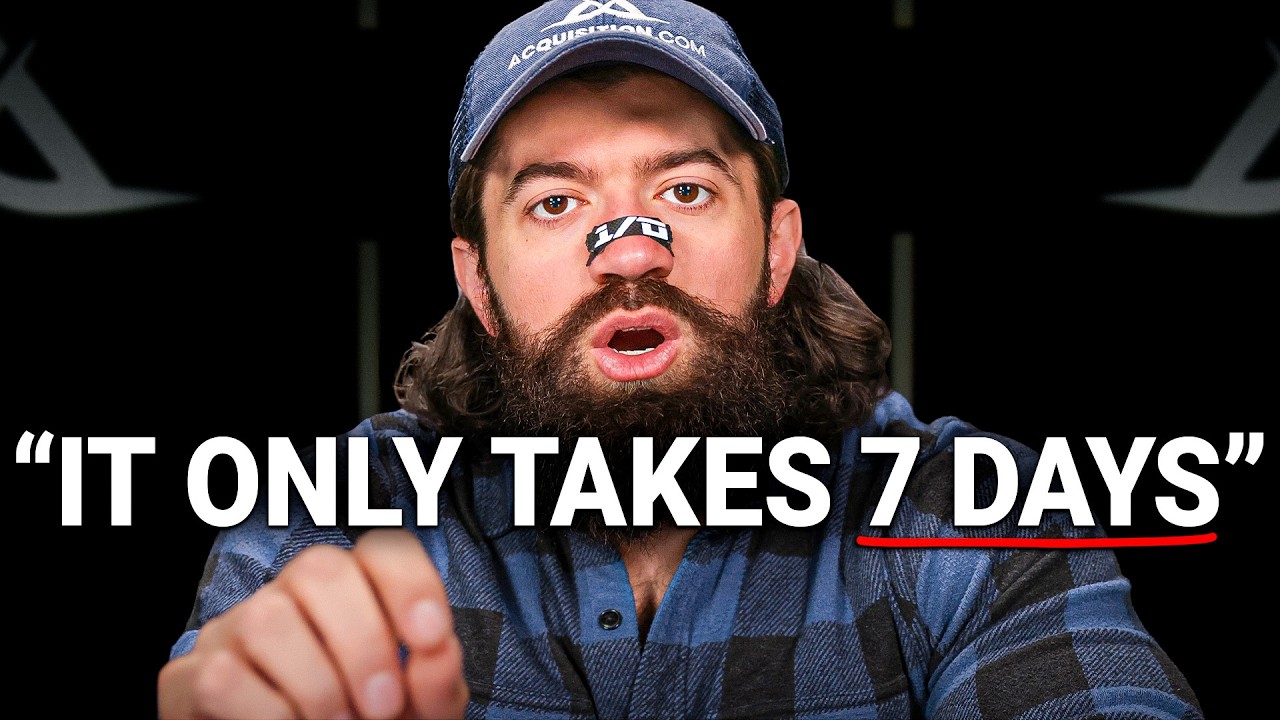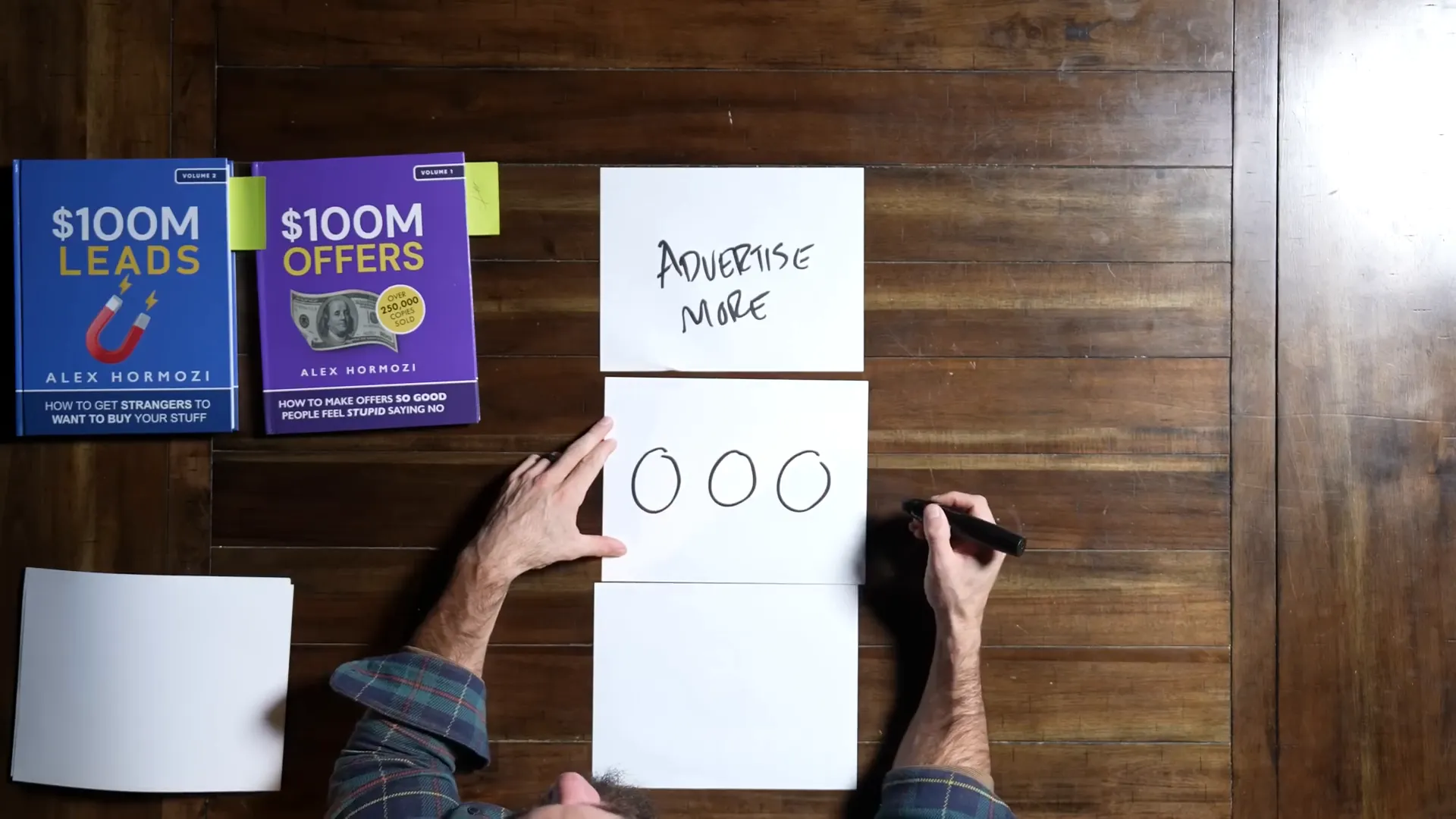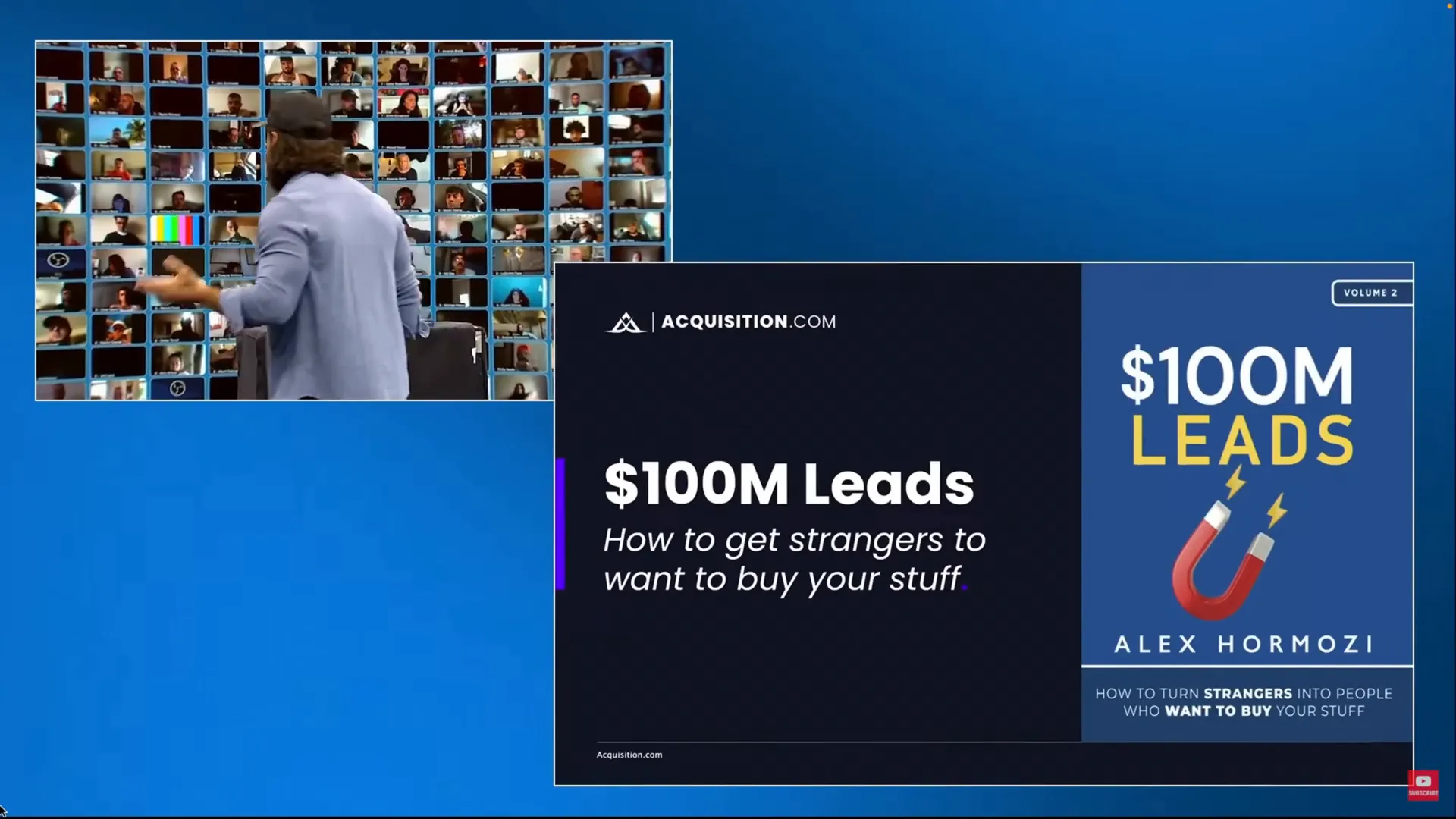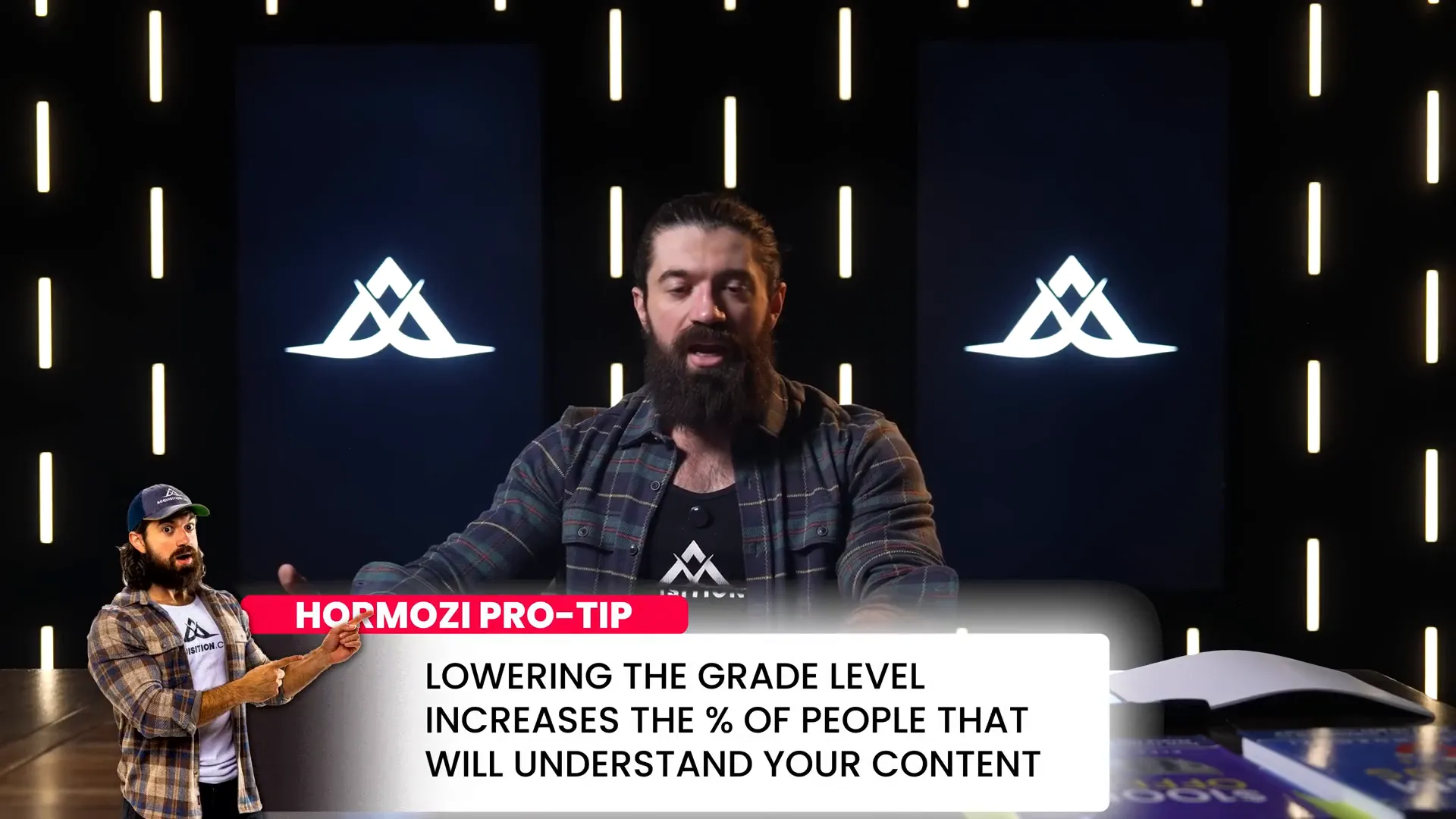Jul 9, 2025
How to Grow Your Business SO Fast in 2025 It Feels ILLEGAL

In the fast-paced world of business, growth is not just a goal; it's a necessity. If you're seeking rapid expansion, you're not alone. Many entrepreneurs aim to scale their businesses quickly, but few know the precise levers to pull to achieve this. In this article, I’ll share the growth strategies that propelled my last three companies to phenomenal success, with each surpassing $1 million in monthly revenue within their first year. If you're ready to take your business to the next level, let's dive in.
Understanding the Growth Landscape
When I talk about rapid business growth, it’s crucial to recognize that most people simply don’t know you exist. If your revenue is under $1 million, I can almost guarantee that a vast majority of potential customers have never heard of your brand. This is the first hurdle you must overcome. The first four hours of your day should be dedicated to making your business known. This involves:
- Increased outreach, whether cold or warm.
- Creating more content.
- Running ads.
You don’t need to do all three; choose one and go all in. This focused approach will build your brand awareness exponentially.
The Boom Factor
Let’s talk about advertising. I refer to it as a "boom," which stands for a Business Order of Magnitude change. What does this mean? While you can make small optimizations like tweaking your close rates or improving your conversion rates, these changes are capped. However, with advertising, you can drastically increase the number of people who find out about your business—potentially by 100 times or more.
Many small business owners get caught in what I call the "optimization mouse trap." They obsess over minor improvements instead of focusing on amplifying their reach. For instance, if you're a local dry cleaner and you see competitors advertising on Facebook, you might feel disheartened. But keep this in mind: the market is far larger than you perceive. Even if there are multiple dry cleaners in your area, you only need a fraction of the market to be profitable.

Shifting Mindsets: From Competition to Collaboration
The next growth principle is about shifting your mindset from trying to beat your competition to shrinking them. Eminem famously responded to his haters by saying, "Who?" This shows the power of ignoring the noise and focusing on your own success.
You can either grow so large that your competitors fade into the background, or you can respond to negativity with kindness. When faced with criticism, I often acknowledge the flaws pointed out by my critics and redirect the conversation toward their successes. This strategy not only diffuses negativity but also positions you as a more favorable figure in the eyes of your audience.
Overwhelming the Market
To truly dominate, you need to be the tallest building in your market. You can either tear down competitors or simply build a bigger structure. When I launched my book, "100 Million Dollar Leads," I employed a multifaceted approach to marketing. I leveraged my audience across various platforms, sent numerous emails, created engaging content, and utilized ads. Yet, during my walks in Las Vegas, I was often surprised at how many people had never heard of the launch. This illuminated a vital lesson: repetition in advertising is not just acceptable; it’s necessary.
People need reminders more than they need education. Often, we assume that once we’ve communicated something, our audience will grasp it instantly. The truth is, many need to hear it multiple times before it sinks in.

Clear, Not Clever: The Power of Simplicity
One of my fundamental marketing rules is "clear, not clever." The highest converting ads often use simple language that resonates with a broad audience. During a review of my most successful campaigns, I discovered that the language used was at a lower reading grade level, making it accessible to more people. The most effective communication is straightforward and avoids complex terminology that may alienate potential customers.
This principle applies not just to ads but to all forms of communication, including landing pages and content. If a third grader can understand your message, you’re on the right track.

Tailoring Your Message
Additionally, the analogies you use should be relatable to your audience. If I’m speaking to mechanics, I might use car-related examples. If my audience is real estate agents, I’ll shift to housing analogies. The more tailored your message, the better your audience will understand it.
To test this, take a look at your email communications. If you run them through a reading grade level app, aim for a score below fifth grade. I implemented this strategy in our email follow-ups and observed a 50% increase in conversions simply by making the language more accessible.

Proof Over Promise
In my earlier days, I focused heavily on promises—what I could offer my customers. While promises are important, proof is even more critical. Take two competing businesses, for instance. One has a great promise but only one review, while the other has thousands of positive reviews. Most would choose the latter, not just for the promise but for the proof that it delivers.
To build proof, start small. Work for free in exchange for testimonials and feedback. This initial phase is invaluable. It allows you to refine your product while gathering the positive reviews that will ultimately propel your marketing efforts.

Show, Don’t Sell
The most compelling way to advertise is to "show, don’t sell." Rather than making grandiose claims, simply present the facts. When I started my YouTube channel, I committed to creating content that showcased my experiences and learnings rather than just selling a product. This authenticity built trust and credibility, making my audience more receptive to my messages.
Mastering the Hook
When it comes to advertising, the hook is crucial. It’s the first impression that captures attention. Without a strong hook, even the best content can fall flat. I often emphasize that the hook is greater than everything else because it determines whether your audience will engage with the rest of your message.
In all my advertising efforts, I allocate a significant portion of my time to refining the hook. Whether it’s a visual or verbal hook, it must resonate with the audience immediately. I’ve seen drastic improvements—one of my videos went from 40,000 views to 780,000 views simply by cutting out unnecessary lead-in content and starting with the hook.

The Power of More
When discussing growth strategies, I emphasize "more, better, and new." Most entrepreneurs are drawn to new ideas, but the real magic lies in doing more of what already works. This is where many get distracted by shiny object syndrome. Instead of jumping to the next big thing, focus on maximizing what’s already effective.
For instance, if you have a sales team closing at 30%, rather than trying to improve that to 35%, consider hiring more salespeople to multiply your efforts. This principle applies across all aspects of business—whether it’s outreach, advertising, or content creation. Increase your efforts in areas that are already yielding results.

Understanding Volatility
One common misconception among business owners is that volatility in sales indicates a problem. In reality, it often signifies low volume. If you’re only making a sale every few weeks, it appears volatile because of the limited activity. If you ramp up your advertising efforts, you can stabilize and increase your sales predictably.
Word-of-Mouth: The Double-Edged Sword
Word-of-mouth can be your best friend or your worst enemy. While positive referrals can drive new customers, negative experiences can spread like wildfire. Research shows that it takes 37 positive experiences to offset one negative one. This is why managing your reputation is essential, especially in the early stages of your business.
When starting out, it’s crucial to focus on delivering exceptional service and gathering feedback. Addressing concerns promptly can help you convert negative experiences into positive ones, ultimately leading to a stronger brand presence.
Stealing from Yourself
One strategy that many overlook is the power of "stealing from yourself." When you find a successful ad or marketing strategy, don’t be afraid to replicate it. In fact, I recommend that 70% of your efforts should go toward reusing what has worked in the past. This consistency is often more effective than constantly seeking new ideas.
Think of it this way: if you demolish a building, it takes just minutes, but building it takes years. Changing a successful strategy can be risky, and often leads to losing what has already proven effective.

The Spectrum of Buyers
Understanding your audience is critical for success. Not all buyers are created equal. Some require more information before making a purchase. This is where the concept of "emotional vs. logical buyers" comes into play. While many marketers focus solely on emotional appeals, it's essential to recognize that buyers exist on a continuum.
High-information buyers may need more data before making a decision, while low-information buyers may make purchases more impulsively. The key is to tailor your messaging to the audience segment you’re targeting. This means creating content that resonates with both types of buyers, guiding them toward your product.

Five Levels of Awareness
To effectively market your product, you must understand the five levels of customer awareness: unaware, problem aware, solution aware, product aware, and most aware. Craft your marketing strategies to guide customers through these stages, and you’ll find more success in capturing their attention and converting them into buyers.
In my experience, investing time and resources into educating your audience pays off in the long run. You may not see immediate returns, but over time, you will build a loyal customer base that trusts your brand.
Balancing the Ratio
When you’re deciding how to allocate your marketing budget, consider the ratio of "give" to "ask." Research shows that a ratio of 3.5 to 1 is optimal for maintaining audience engagement. This means for every three pieces of value you provide, you can include one promotional message without losing your audience’s interest.
Platforms that prioritize giving over asking tend to grow faster. TikTok, for instance, initially focused on providing content without ads, which helped them acquire users rapidly. This principle can be applied to your marketing strategy as well.

Conclusion: The Path Forward
As you embark on your journey to grow your business, remember that the principles of clear communication, proof over promise, and the power of consistency will serve you well. By focusing on what works, leveraging your existing strategies, and continually refining your approach, you can achieve remarkable growth.
For those ready to dive deeper into these strategies, I invite you to download your free scaling roadmap here and explore the resources available to help you succeed.
Keep pushing forward, and remember, every epic outcome starts with a vision and the determination to see it through.